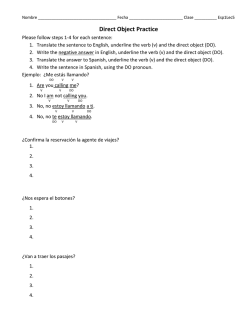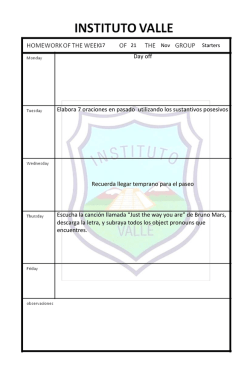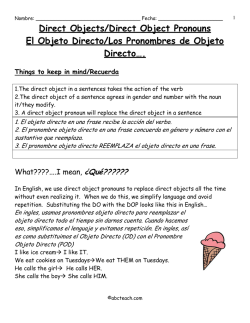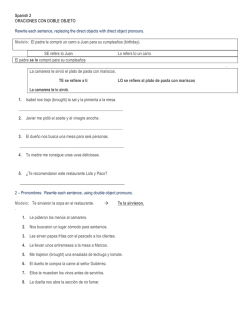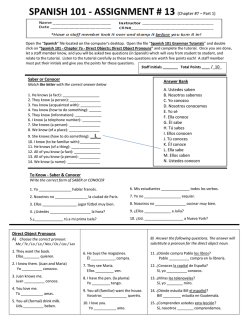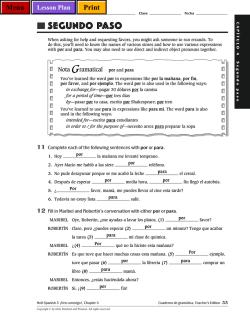
Direct objects and direct object pronouns
Direct objects and direct object pronouns How do identify direct objects? How do I replace them with a direct object pronoun? What are the direct object pronouns in Spanish? Info for this presentation taken from Practice Makes Perfect: Spanish Pronouns and Prepositions by Dorothy Richmond What is a direct object? The direct answers the question “what?” or “whom?” with regard to the verb in a sentence. Examples: John has the book. (What does he have?) The book is the direct object. Paul sees Mary. (Whom does Paul see?) Mary is the direct object. Using direct object pronouns. What does a pronoun do in a sentence? Direct object pronouns in English: me us you him, her, you (Ud.), it them, you all ● Let’s replace the direct objects in our examples with pronouns. John has the book. → John has it. Paul sees Mary. → Paul sees her. Direct object pronouns in Spanish Direct object pronouns (DOPs) in Spanish: me nos te lo, la los, las ● When you use DOPs in a sentence, you place them before the conjugated verb. ● We’ll use the previous examples in Spanish: Juan tiene el libro. → Juan lo tiene. Paul ve a Mary. → Pablo la ve. Another rule for pronoun placement When using a double verb phrase, you attach the DOP to the end of the unconjugated verb. Prefiero mirar la televisión. Prefiero mirarla. Tú tienes que hacer la tarea. Tú tienes que hacerla. Me gusta escuchar las noticias. Me gusta escucharlas. Pausa With your partner, discuss 4 facts from the lesson so far. Identify the direct object and replace it with a DOP. Yo hago la tarea en mi casa. La hago en mi casa. Identify the direct object and replace it with a DOP. Tú lees los libros para la clase de inglés. Tú los lees para la clase de inglés. Identify the direct object and replace it with a DOP. Ella quiere los zapatos nuevos. Ella los quiere. Identify the direct object and replace it with a DOP. Nosotros comemos las frutas para el desayuno. Nosotros las comemos para el desayuno. Identify the direct object and replace it with a DOP. Usted prefiere la camisa azul. Usted la prefiere. Identify the direct object and replace it with a DOP. Yo necesito el dinero para comprar un coche. Yo lo necesito para comprar un coche.
© Copyright 2026
